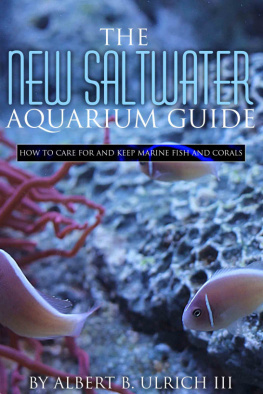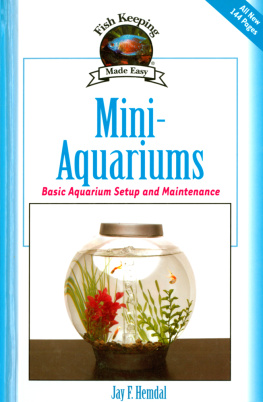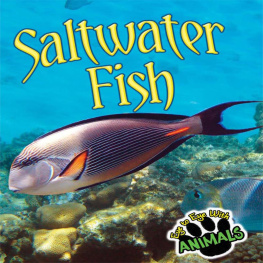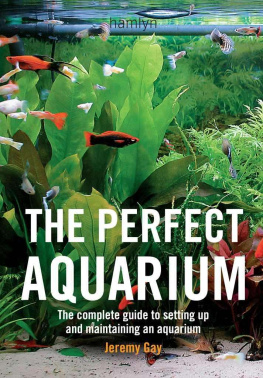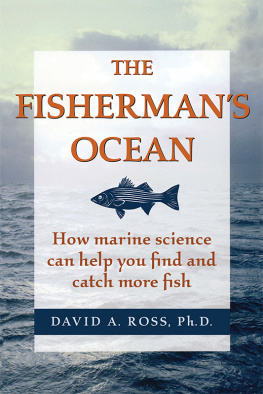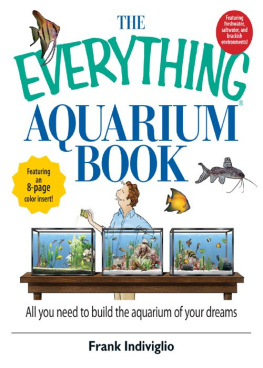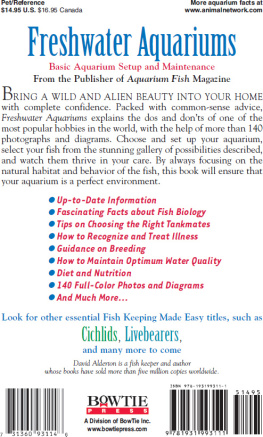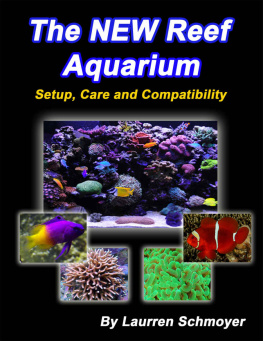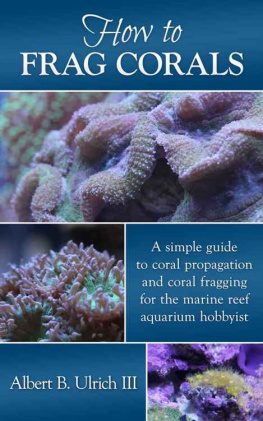The new Saltwater AquariumGuide
How to Care for and Keep Marine Fish andCorals
By Albert B. Ulrich III
Copyright 2014 by Albert B. Ulrich III
Get more information about the Aquarium Hobbyat
http://www.SaltwaterAquariumBlog.com
Copyright 2014 by Albert B. Ulrich III
Smashwords Edition
This book was published with intent toprovide accurate information. While every precaution has been takenin preparation of this book, the author assumes no responsibilityfor error or omissions. Neither is any liability assumed fordamages resulting from the use of this information herein.
All rights reserved.
Table of Contents
Acknowledgements
Special thanks to my Wife and Father forthe yeomans work they did fixing comma splices, misspellings,inconsistencies and even sentence fragments. They arent even fishgeeks, they just offered their help. I also want to personallythank Susan Boenhke who somehow found time in between work andschool, to provide valuable feedback.
A quick shout-out to Doc Leibel. I was inyour office when the neurons first connected and I realized thatYOU were the author of that South American Cichlids book I readyears before and decided that I wanted to be like you. Your bookwas better, published traditionally and had a hard cover, butthanks for being an inspiration.
Preface
I amgoing to venture a guess that if you bought this book, you'reinterested in setting up your own saltwater aquariumor you knowsomeone who is. When I meet newcomers to the hobby, I'm alwaysinterested to hear the story of how or why they got into the hobby.Ive heard stories of a fascination that started during a childhoodtrip to the zoo or public aquarium or fond memories of an aquariumtheir father or mother used to care for. Many people have had anaquarium for years and just want to jump into the saltwater end ofthe pool. What's your story? Stop by my blog, introduce yourself,give me a chance to say Thanks, and let me know what brought youhere.
http://saltwateraquariumblog.com/contact
As far as my storywell, Ive been an"aquarium-nerd" for a long time. I hope youre not offended by theterm. I wear that badge with honor.
Oddly enough, I became an aquariumnerd by an indirect pathway. When I was 6 years old, mygrandmother bought me a Red-Ear Slider Turtle at a Farmers Market.Despite my parents protests at the time, I reluctantly coaxed theminto letting me supplement the turtles diet with live feeder fish.From what I remember, the turtle (I don't even think I gave him aname) generally made short-work of the sushi offering. But myfascination with aquarium fish began a few weeks after I bought hima dozen feeder guppies.
As fate would have it, the turtle did not eatall the guppies from that bag. There were two survivors: onelarger, drab fish and a slightly more colorful but much smallerfish. After a while, it seemed that the fish just blended into thebackground, completely ignored by the turtle. Well, guppies beingguppies, it didn't take long for the drab-looking female guppy togive birth to several live offspring, which blew my six-year-oldmind. In an ironic twist of fate, the guppies hunted down and atetheir own young, providing scientific evidence for the clichyou are what you eat.
My parents shut down the old turtle operationsometime after that. I remember the 10-gallon tank beingbroken-down and thrown away. I remember moving the turtle to asmaller, plastic cage (that I would never put a turtle in now thatI have a more mature appreciation for animal husbandry). And Isadly remember the day I found the turtle drooped lifelessly fromwithin his shell. But the seed was planted, and after a few years Itransitioned into the aquarium hobby.
I walked to the mall with a friend of mine(about a mile and a half, both ways uphill) as a weekend afternoonadventure. I don't remember what my friend bought, but while I wasthere, I bought a 5 gallon tank at the Phar-Morwhich wasincidentally at the other end of the half-mile long Franklin MillsMall, in Philadelphia, PA. I lugged the aquarium home and set-upshop on an end-table in the basement.
It was a spontaneous purchase. I hadn'tcleared any of this with my parents before-hand. I think they wereimpressed by my conviction, evidenced by lugging the thing home 2miles without breaking it.
Now that I look back, I'm amazed that Ididn't drop the thing on the way home.
Determined to rekindle my livebearer success,my first purchase was a pair of Green Swordtails, Xiphophorushelleri, a freshwater live bearing fish (similar to the guppiesI had years before). Of course it did not take long before my tankwas full of little Swordtailsand I have had wet thumbs eversince.
Over the years, I branched out fromlivebearers to many different fish species. I had Neon Tetras,Paracheirodon innesi, and Tiger Barbs, Puntiustetrazona, spawn in my tanksalthough I never successfullyraised any of the fry. The first egg-laying fish I successfullyreared was the Convict Cichlid, Amatitlania nigrofasciata. Ikept a pair of young adult fish in an un-heated 1-gallon hexagonalaquarium. I am not suggesting in any that was a reasonable setupfor such a large tropical fishjust reporting the story anddemonstrating the low level of technique required to rear such abulletproof fish. The trickiest part of that arrangement wasfinding room for the fry (which I later moved into a few separate,unheated goldfish bowls. My room looked like a cichlid refugeecamp.
Eventually, I upgraded to (and over-crowded)a 20 gallon tank and kept various species of cichlids. I bred theSouth American cichlid Geophagus brasiliensis, and theAfrican Dwarf Cichlid, Pelvicachromis pulcher, more commonlyknown as Kribensis.
In college, I was fortunate to have met,studied under and worked with one of the best minds in the aquariumhobby Dr. Wayne S. Leibel, expert in all things New World Cichlid.I was amazed by the volumes of magazines on Waynes bookshelf, eachcontaining an article which he had authored. It was when I was inhis office that I had decided to be an author.
It wasnt until I was in my mid-twenties,however, that I became all salty...pun intended. Of course I wasfascinated by saltwater reef fish and invertebratesbut I had noexperience keeping saltwater fish.
My wife bought me a nice 75-gallon aquariumas a gift, and I decided to take the plunge into the saltwaterhobby. I started with a basic fish-only tankcrushed coralsubstrate, a few decorations and some damselfish. After a fewmonths of success, I added some live rock, upgraded my lights andadded some mushroom coral. From there, I have scaled up a littlebit more and added a rack of tanks in my basement (I call it a fishroom, but its really just a rack of tanks in a basement). I havesuccessfully spawned the Banggai Cardinalfish, Pterapogonkauderni, Common Clownfish, Amphiprion ocellaris, andthe Neon Goby, Elacatinus oceanops. I have also kept andpropagated many coral species.
But that isn't why I'm writing this book. I'mactually writing this book because I've made nearly every mistakepossiblegenerally out of stubbornnessand I have such a strongaffinity for this hobby that I want to keep you, if you'reinterested, from making the same mistakes I made.
When I transitioned from freshwater tosaltwater, I was already convinced I knew everything there was toknow about keeping saltwater fish. By the time I switched over tothe salt-side, I had been keeping fish healthy in captivity foryears. But a lot of what I readin books and onlineseemed a bittoo scientific (like it was written to impress me with how manyscientific terms the author knew rather than educate me). Theadvice was also generally sterile and written in absolutes as 'thebest' or 'only' way to do things. It didn't take long to find a fewconflicting accounts where different authors recommended completelyopposite things. So, I pig-headedly blazed into the hobby convincedI was going to do things the way I had always done them. Of course,I made a lot of mistakes along the way.
Next page
